Photos: WWII Shipwrecks Found Off NC Coast
A merchant freighter called Bluefields and the German U-boat U-576, both of which went down on July 15, 1942 during World War II, were discovered on floor of the Atlantic Ocean off the coast of North Carolina by a team of researchers from the National Oceanic and Atmospheric Administration (NOAA) and the Bureau of Ocean Energy Management. Here's a look at what they found. [Read full story on the WW II shipwreck discovery]
U-576 Sonar Image

A sonar image of the German U-boat U-576, which was sent to the bottom of the Atlantic by U.S. Naval forces after attacking a guarded merchant convoy on July 15, 1942. The site of this shipwreck, the grave of 45 German crewmen, was lost until August 2014, when researchers with the National Oceanic and Atmospheric Administration (NOAA) and the Bureau of Ocean Energy Management rediscovered the wreck site. The U-boat sits only a few hundred yards away from the wreck of the merchant ship Bluefield which it sunk only moments before also going down. (Credit: NOAA & SRI International)
Kapitanleutnant Hans-Dieter Heinicke

Kapitänleutnant Hans-Dieter Heinicke, the captain of the German U-boat U-576. On five deployments between 1941 and 1942, U-576 sank four Allied merchant ships and damaged two others, one irreparably. The first three were the British merchant vessel Empire Spring, the U.S. freighter Pipestone County, and the Morwegian merchant ship Taborfjell. (Credit: Ed Caram)
U-576 crew on deck
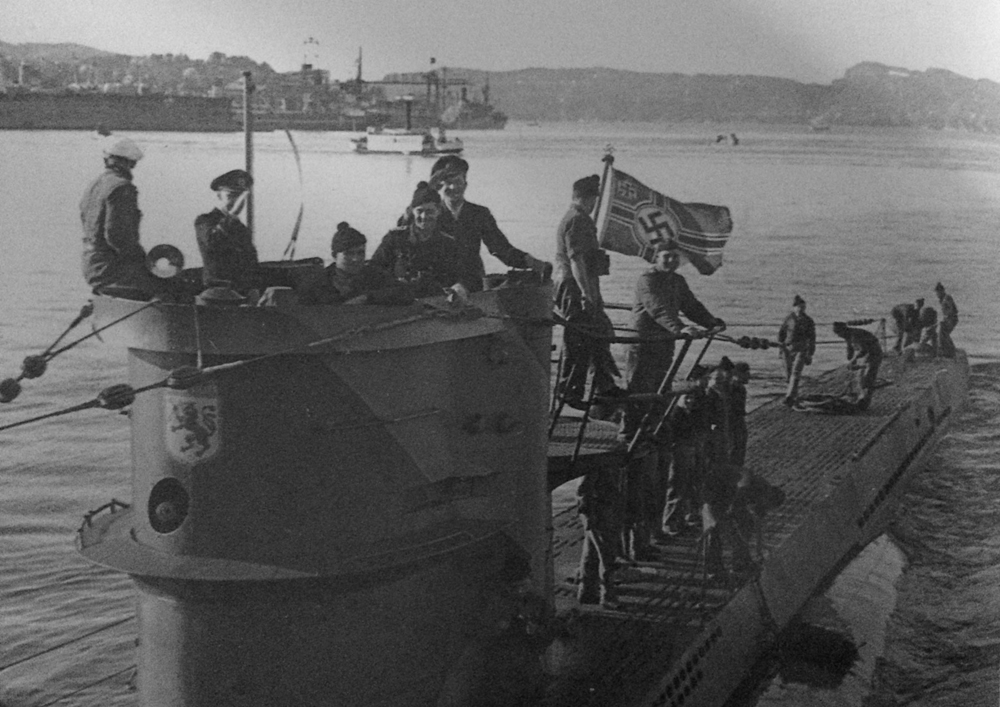
The crew of U-576 on deck. On its fifth deployment, U-576 damaged its main ballast tank. Its captain, Hans-Dieter Heinicke, prepared to limp back to Germany. Before the U-boat could leave U.S. waters, however, it ran into a convoy of 19 merchant ships guarded by five Navy and Coast Guard escorts. Heinicke couldn't resist the opportunity and fired four torpedoes into the convoy. Two hit the merchant ship Chilore. Another hit the J.A. Mowinckel. The last hit the Nicaraguan-flagged Bluefields. (Credit: Ed Caram)
Sign up for the Live Science daily newsletter now
Get the world’s most fascinating discoveries delivered straight to your inbox.
U-576 getting underway

U-576 leaves port. The U-boat was one of many deployed to patrol the waters off the coast of North Carolina in an attempt to disrupt Allied shipping routes. NOAA estimates that between January and August 1942 alone, U-boats sank more than 50 vessels in this area as part of the broader Battle of the Atlantic. (Credit: Ed Caram)
U-576 crew gathered around the conning tower
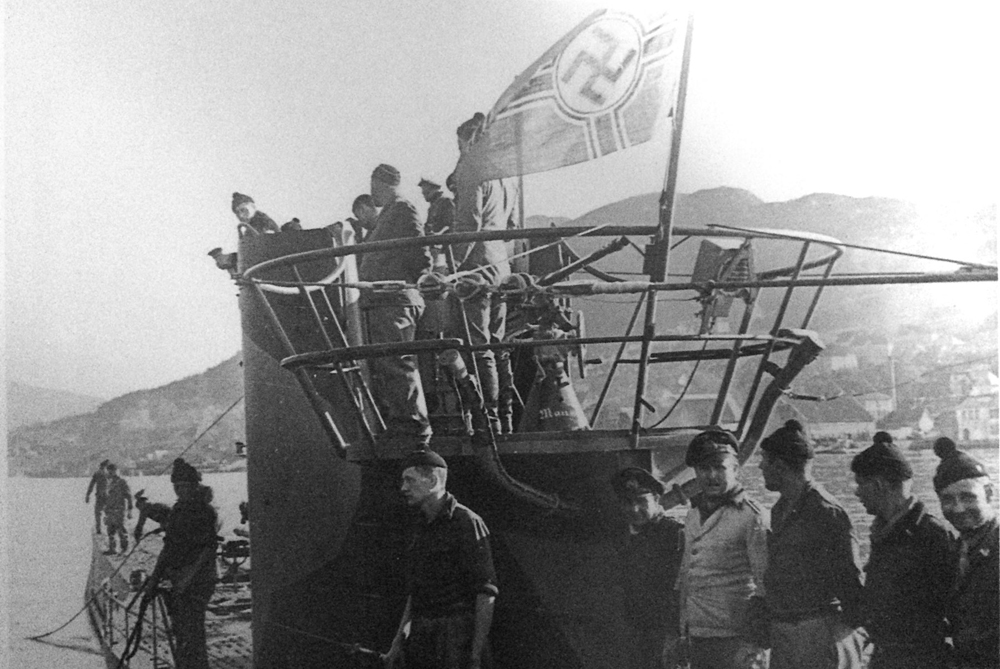
The crew of U-576 gathers around the conning tower, a structure still visible on sonar images of the sunken vessel today. The ship and her 45-man crew met their fate on July 15, 1942. After attacking an Allied convoy, the U-boat came under simultaneous fire from the deck guns of the merchant vessel Unicoi and depth charges from U.S. Navy Kingfisher aircraft. Mere moments after sinking the merchant Bluefields, U-576 went down as well. (The ships Chilore and J.A. Mowinckel stayed afloat, but Chilore was so badly damaged that it was towed and beached. That ship would later capsize and sink during a towing attempt near Chesapeake Bay.) (Credit: Ed Caram)
The bow of the U-576 during rough seas
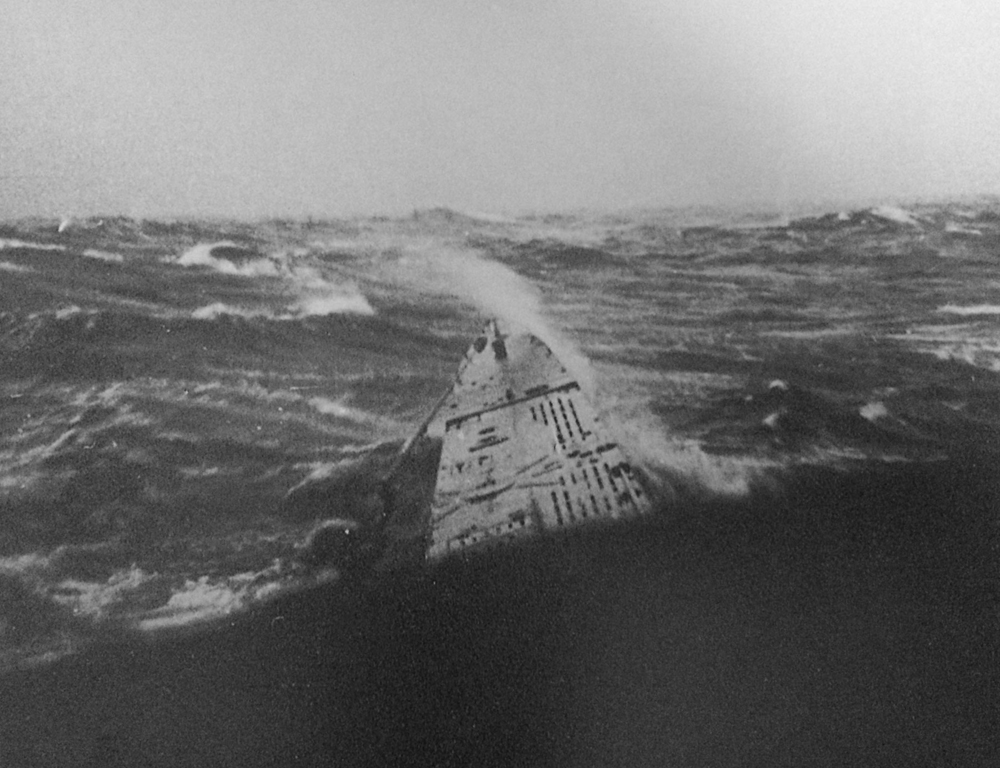
The bow of U-576 cuts through rough seas. The U-boat was 220 feet (67 meters) long and about 20 feet (6 meters) wide. (Credit: Ed Caram)
U-576 at the dock

U-576 docked. U-boats spent most of their time on the surface, submerging only for evasive maneuvers and attacks. At least 55 U-boats attacked merchant ships off the East Coast and Gulf of Mexico beginning in 1942, according to the UNC School of Education's Learn NC. By July 1942, U-boats had sunk or damaged 397 ships, killing more than 5,000 people. The most dangerous spot for merchants was the busy shipping route off of North Carolina's Outer Banks. (Credit: Ed Caram)
U-576 crew, informal
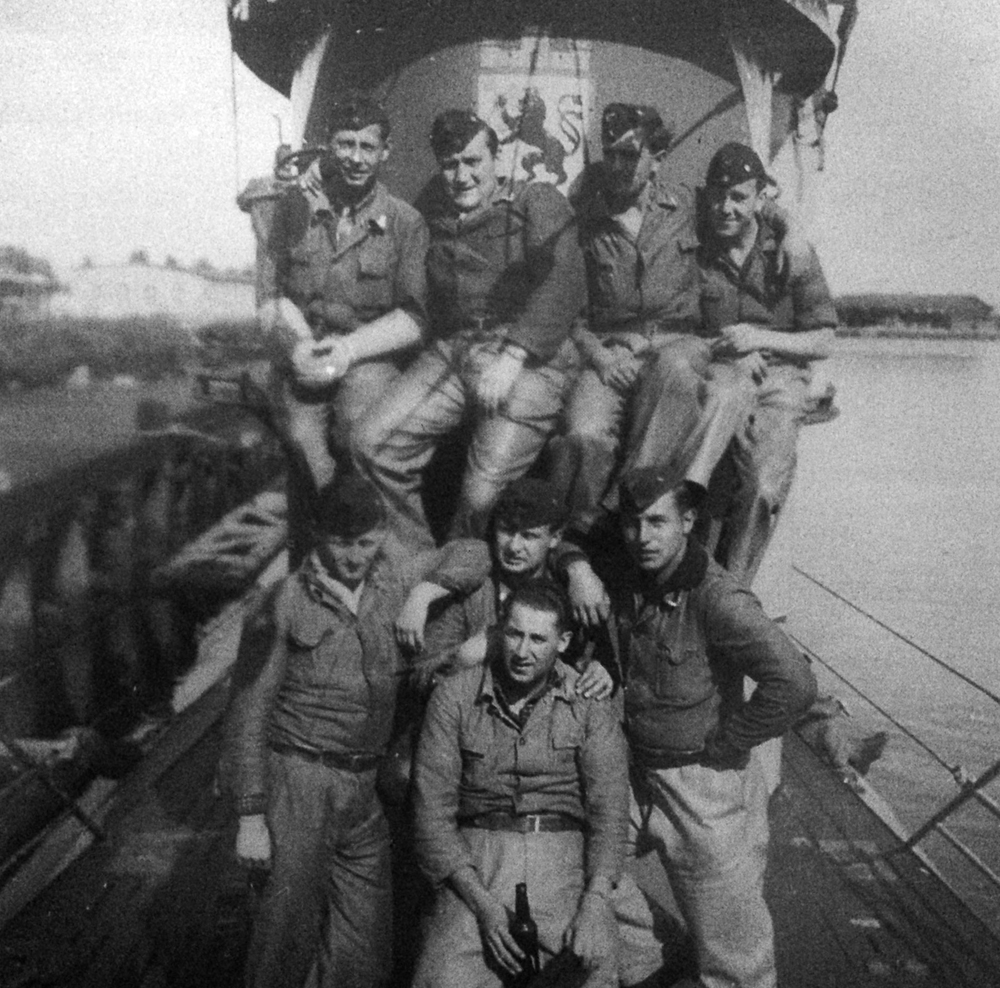
An informal shot of some of the men who crewed U-576. According to the U-boat reference uboat.net, U-576 never lost a crew member until the day she sank, when all 45 onboard died. (Credit: Ed Caram)
U-576 crew, informal
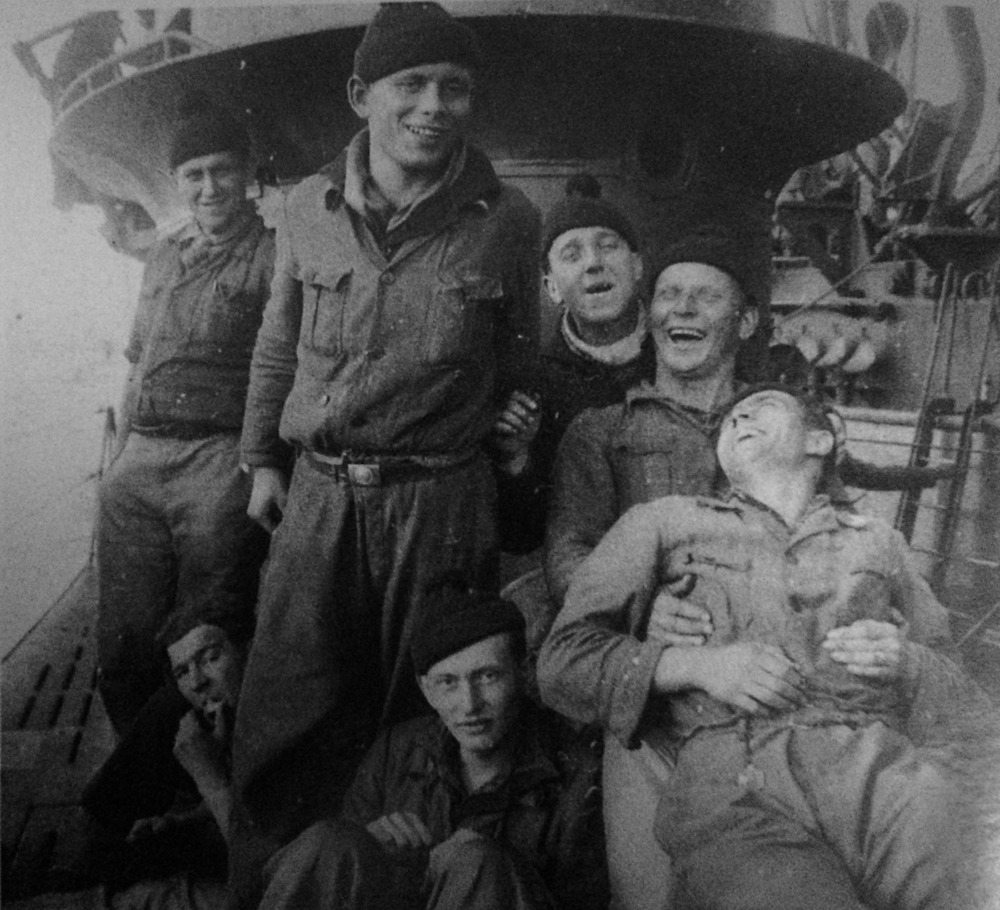
An informal shot of more of U-576's crew. The bodies of these men rest at the newly discovered wreck site. There are no plans to salvage the U-boat or recover the bodies; under international law, the site is a war grave, protected from disturbance. (Credit: Ed Caram)
U-576 & Bluefields battlefield site sonar image
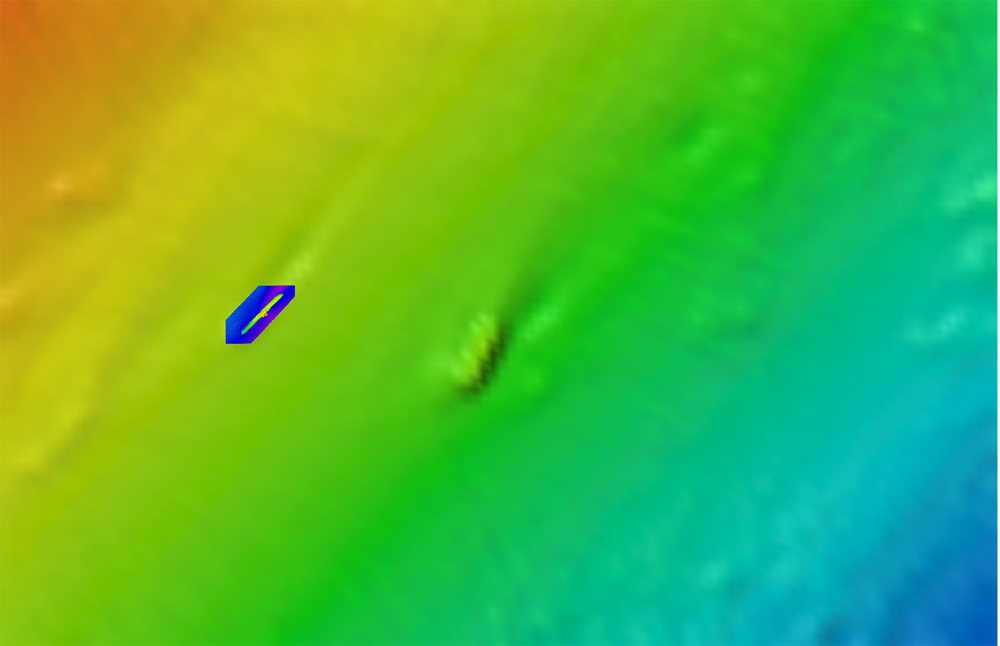
A years-long collaboration and seafloor surveys about 30 miles (48 kilometers) off the coast of North Carolina eventually turned up the final resting places of U-576 and Bluefields, the last ship the U-boat sunk. This sonar image shows outlines of each vessel resting only 240 yards (219 meters) apart. (Credit: NOAA & SRI International)
Bluefields sonar image
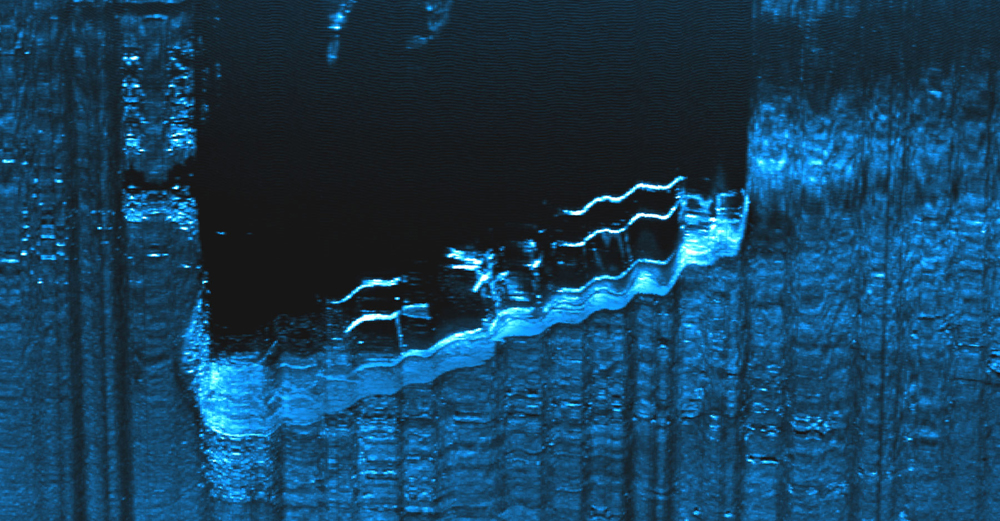
A sonar image of Bluefields, the merchant marine sunk by U-576's torpedoes. It only took the ship 12 minutes to sink, according to NOAA, but the crew all escaped with minor injuries. (Credit: NOAA)
USS McCormick
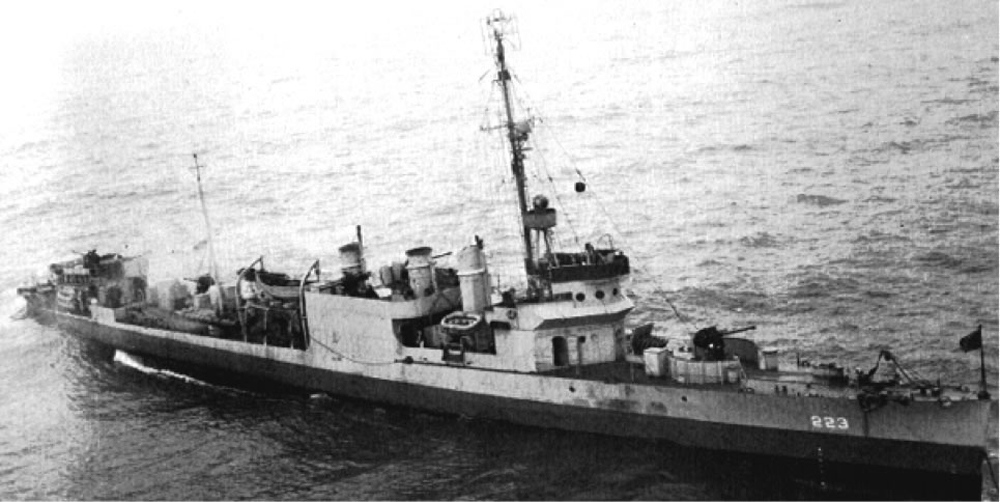
The USS McCormick, photographed in early 1944. This ship was one of the military vessels escorting the merchants in convoy KS-520, which was attacked by the German U-boat U-576. The skirmish claimed four Allied lives, including one naval gunner, one merchant sailor, and two crewmen on a tugboat that struck a mine while attempting to salvage ships damaged in the fighting. (Credit: NAVSOURCE)
USS Ellis
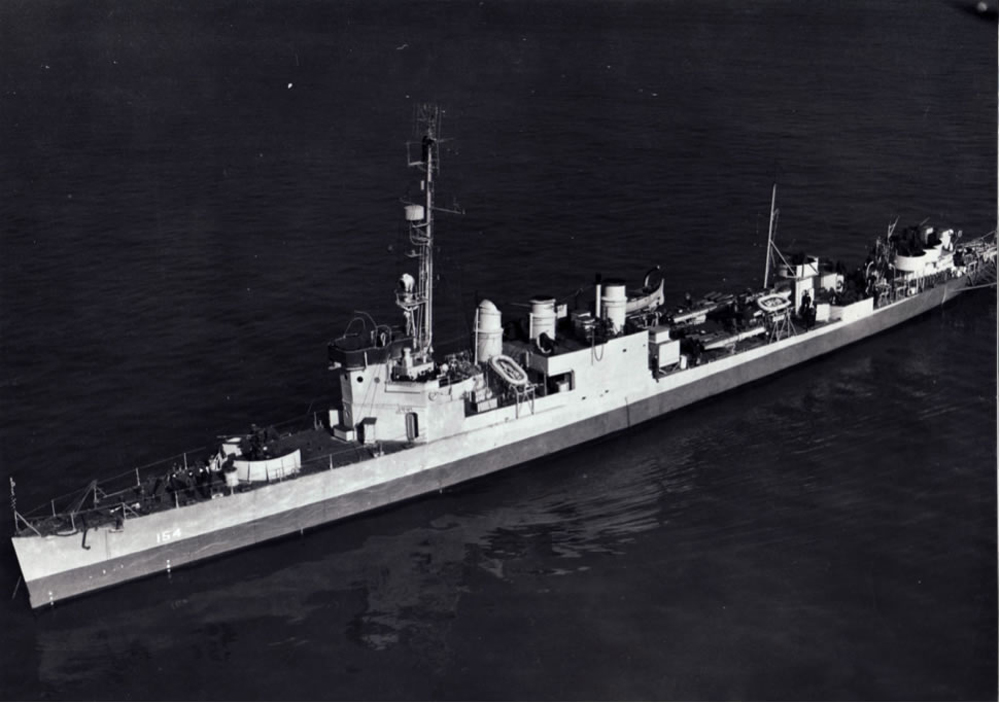
The USS Ellis, photographed in late 1943. This ship was one of the five assigned to protect the 19 merchant vessels in the KS-520 convoy. The convoy was attacked at about 4:15 p.m. on July 15, 1942, resulting in the sinking of the merchant ship Bluefields. (Credit: National Archives)
USS Spry
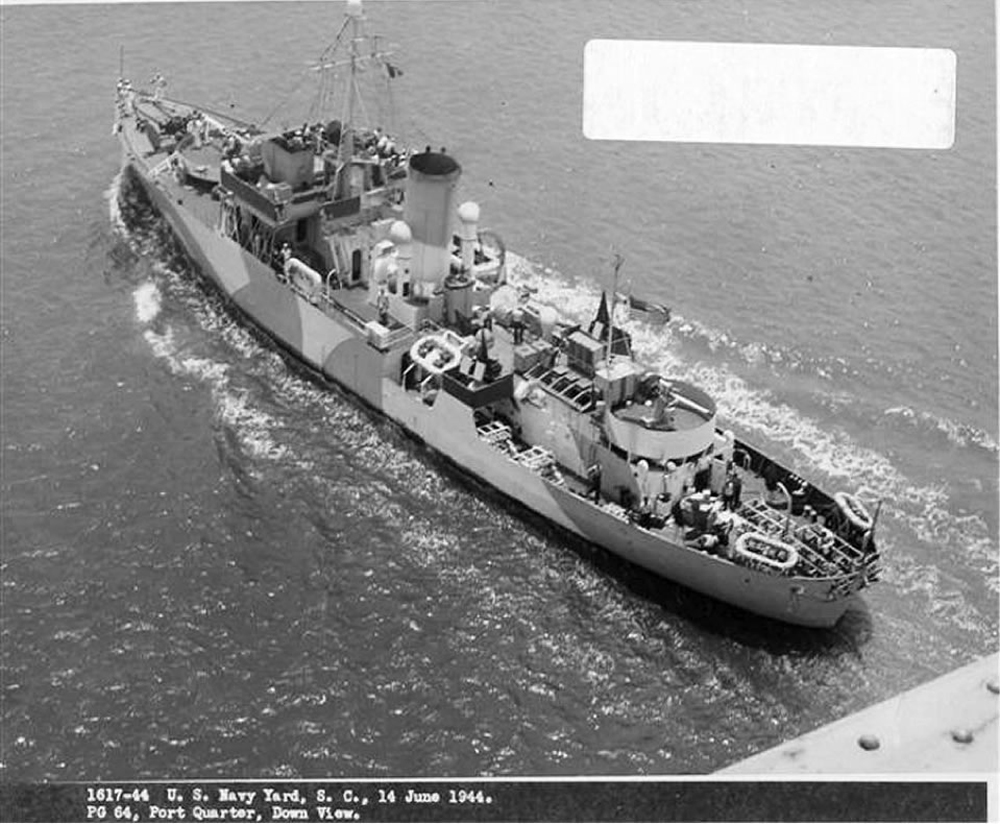
The USS Spry, photographed in June 1944. Along with the USS McCormick, the USS Ellis, the USCG Triton and the USCG Icarus, the USS Spry was escorting 19 merchant ships along the North Carolina coast when the convoy came under U-boat attack on July 15, 1942. Gunners aboard the merchant Unicoi fired on the U-boat, and U.S. Navy aircraft dropped two depth charges on it, sinking the submarine. (Credit: NAVSOURCE)
U-576 watch crew in conning tower
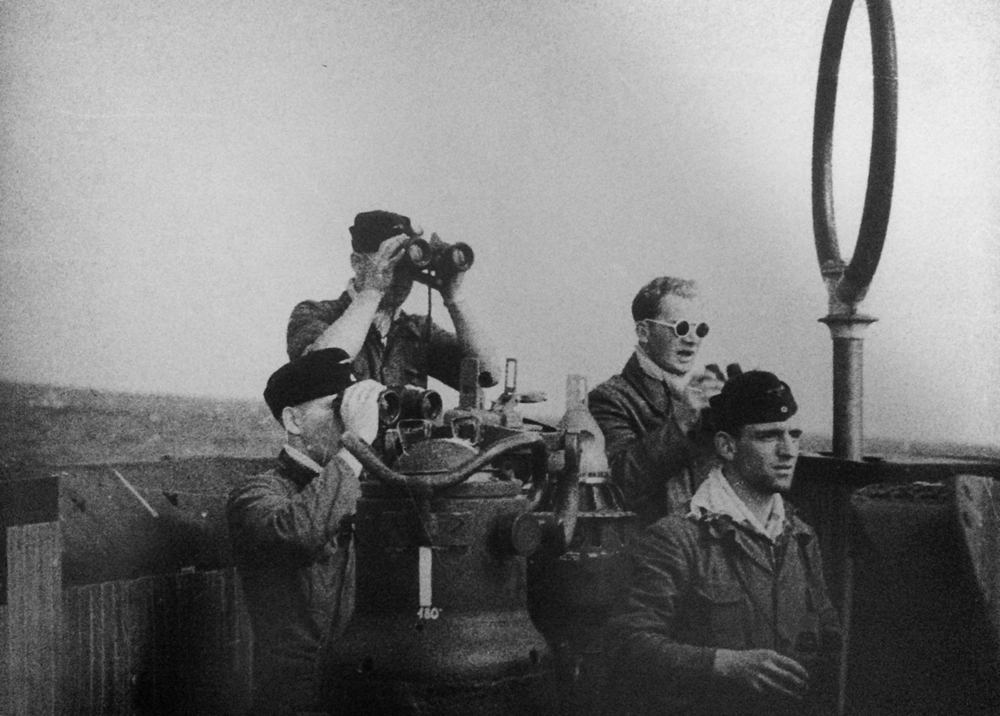
The watch crew of U-576 in the U-boat's conning tower. The area off the North Carolina coast where U-576 rests is known as the Graveyard of the Atlantic because of the number of WWII-era ships that rest on the ocean bottom. (Credit: Ed Caram)
U-576 coming into St. Nazaire
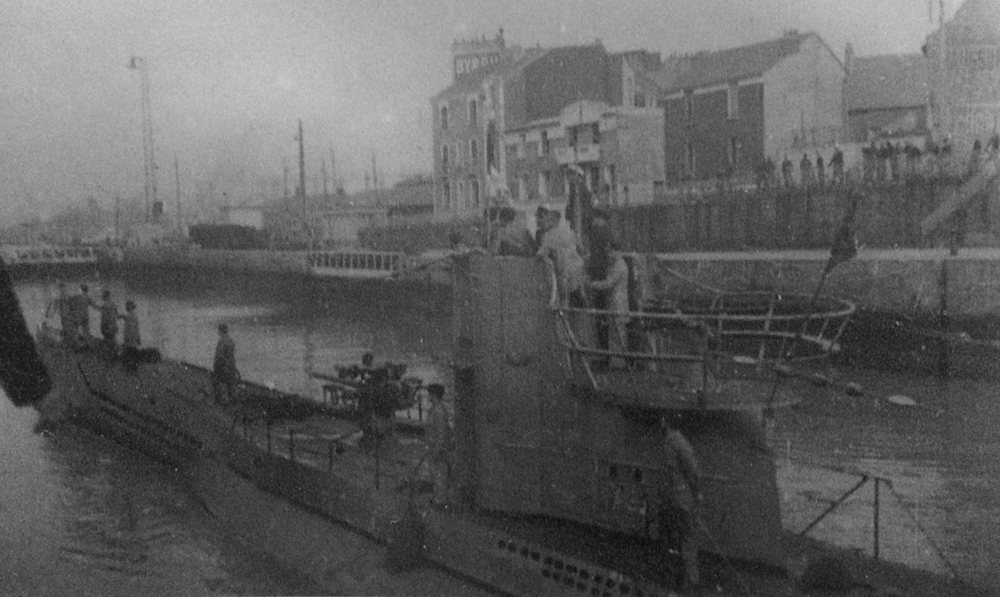
The U-boat U-576 pulls into the harbor at Saint-Nazaire, France, in this undated photograph. U-576 was deployed five times between September 1941 and July 1942. It left Saint-Nazaire on June 16, 1942, for its fifth and final deployment, during which it would be sunk by U.S. Naval forces. (Credit: Ed Caram)
Formal picture of U-576 crew
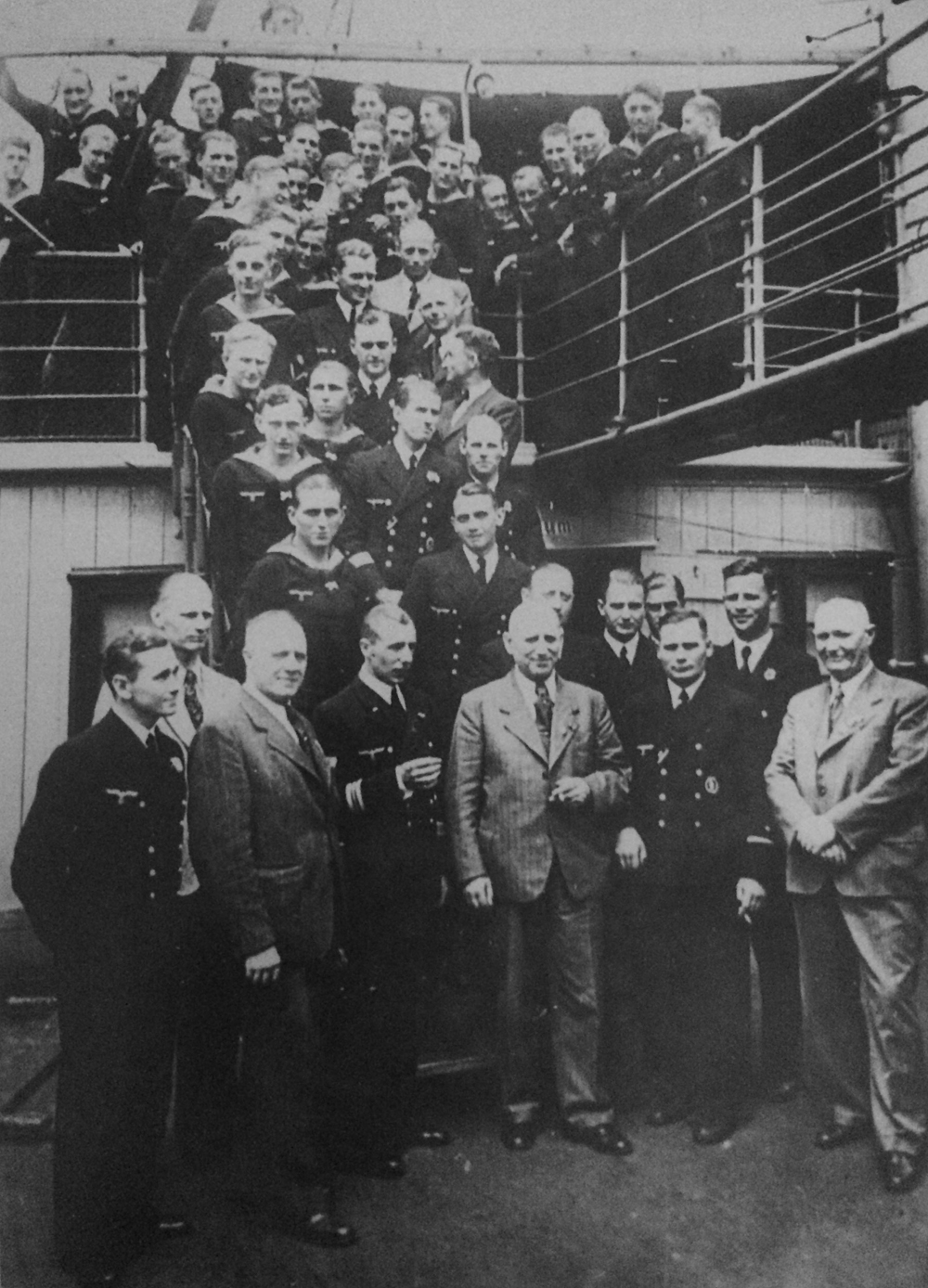
A formal portrait of the 45-man crew of U-576. (Credit: Ed Caram)
U-576 crew gathered around 88mm gun
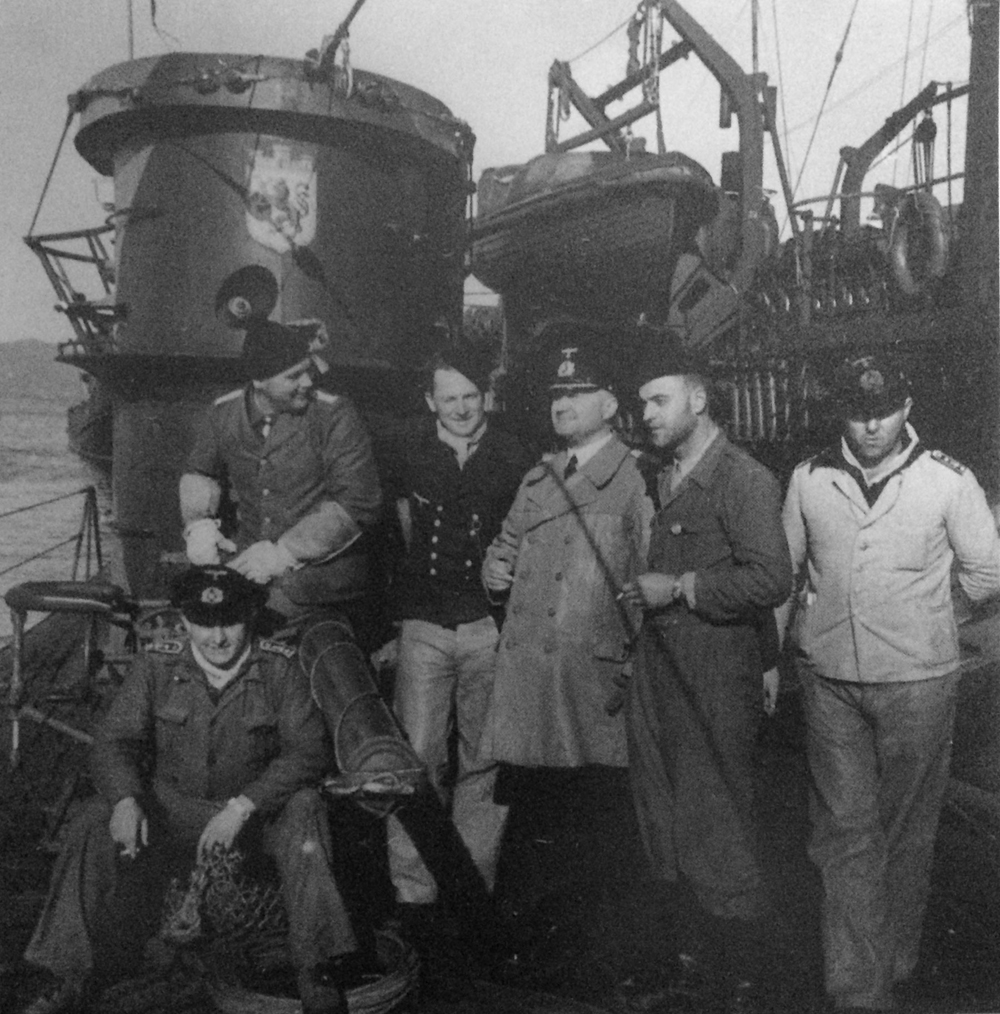
The crew of the U-boat U-576 gathers around the submersible's 88mm gun. U-boats could fire torpedoes in undersea attacks, or attack from the surface using deck guns. (Credit: Ed Caram)
Follow LiveScience @livescience, Facebook & Google+.

Stephanie Pappas is a contributing writer for Live Science, covering topics ranging from geoscience to archaeology to the human brain and behavior. She was previously a senior writer for Live Science but is now a freelancer based in Denver, Colorado, and regularly contributes to Scientific American and The Monitor, the monthly magazine of the American Psychological Association. Stephanie received a bachelor's degree in psychology from the University of South Carolina and a graduate certificate in science communication from the University of California, Santa Cruz.
Catquistadors: Oldest known domestic cats in the US died off Florida coast in a 1559 Spanish shipwreck
'Vaccine rejection is as old as vaccines themselves': Science historian Thomas Levenson on the history of germ theory and its deniers
Astronomers discover giant 'bridge' in space that could finally solve a violent galactic mystery









